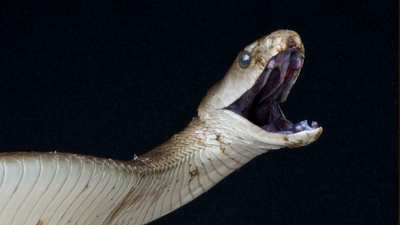ARTICLE AD BOX

While venomous snakes pose risks, with thousands dying annually from bites, their venom is a vital resource. This potent substance is crucial for developing life-saving antivenom and has significant pharmaceutical applications, including pain relief and blood clot reduction, underscoring the importance of conservation and antivenom production.
Snakes have long held a place of fear and fascination around the world. According to the World Health Organization, there are more than 3,000 snake species globally, but only 200 to 300 of them are venomous.
Among these, the Inland Taipan is regarded as the deadliest, possessing enough venom in a single bite to potentially kill 100 people.Sadly, nearly 140,000 people lose their lives annually due to snakebites, as reported by the BBC. Despite their scary reputation as symbols of evil and chaos, snakes play an important and irreplaceable role in maintaining ecological balance.With the increasing number of snake bite cases every year, antivenom is a critically important, high-demand medical product, especially in countries where snake bites are common.

Representative Image
Venom serves as a survival tool for the reptile and science
Venom helps snakes subdue prey and defend themselves and is also used for medical advancements. Produced in glands at the back of a snake’s head, venom is injected through their bite, as explained by Let’s Talk Science. Extracting venom for antivenom production involves carefully letting the snake bite into a container, then collecting the venom it releases. The quantity of venom varies widely between species and individual snakes, ranging from 1 to 850 milligrams or more, notes the University of Florida.

Representative Image
Creating antivenom is a complex process
Venom is injected into animals such as horses to stimulate an immune response, and later the animals’ antibodies are harvested to develop antivenom. A single dose of antivenom can cost as much as $14,000, according to Smithsonian Magazine.
Snake venom has application in real life
Some snake venoms are valuable for pharmaceutical applications like pain relief and blood clot reduction. For example, King cobra venom, rich in proteins, is used in medicines treating chronic pain and is the second most expensive venom, costing $1,53,000 per gallon.

Representative Image-- Snake bite
Coral and Brown snake venoms, costing about $4,000 per gram, are similarly used to produce antiviral, antibacterial, and antivenom drugs.So, while venomous snakes pose real risks, their venom is a valuable resource for medicine and scientific research, highlighting the importance of effective antivenom production and snake conservation efforts.

 4 hours ago
5
4 hours ago
5









 English (US) ·
English (US) ·